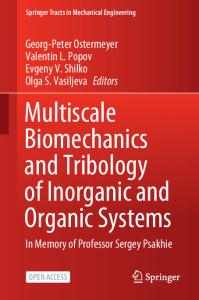Deformation and Failure of Nanostructured Materials with Bimodal Grains
- PDF / 167,459 Bytes
- 6 Pages / 612 x 792 pts (letter) Page_size
- 74 Downloads / 369 Views
P8.15.1
Deformation and Failure of Nanostructured Materials with Bimodal Grains R.Q. Ye, B.Q. Han and E.J. Lavernia∗ Department of Chemical Engineering & Materials Science University of California, Davis, CA 95616 Abstract The low ductility of nanostructured materials is attributed to the deficit of dislocation activity in the nanometer range. Recent scientific interest in nanostructured materials stems from reports of alterative combinations of mechanical properties, although a low ductility is typically reported. One promising approach based on the concept of multiple length scales is illustrated by a “bimodal” microstructure, i.e. containing a mixture of nanostructured and coarse grains. The present work reports a numerical study of the tensile deformation and fracture of a nanostructured Al alloy with a bimodal microstructure. In the theoretical framework used in the present study, the elastic-plastic behavior and deformation processes are approximated by Ramberg-Osgood formula and finite element method, respectively. The numerical results are found to be in a good agreement with the experimental behavior. 1. Introduction The processing and properties of nanostructured materials have been intensively investigated in the last two decades [1]. Available data suggest that bulk nanostructured materials usually display very high strength and hardness, but very poor ductility[1-3]. An early study by Tellkamp et al. [4] on the behavior of nanostructured Al alloys processed via a cryomilling (i.e. milling in liquid nitrogen) and consolidation approach suggested that the presence of coarse-grained regions may contribute to the improved ductility [5-7]. Most recently, cryomilled aluminum alloys with a mixture of nanostructured grains and submicron grains (e.g., so-called “bimodal” microstructure) have been successfully fabricated [4,8]. In these studies, cryomilled aluminum alloys, processed with a predetermined fraction of coarse grains have revealed an improved ductility without much sacrifice in strength. Despite encouraging results reported for bimodal materials, our fundamental understanding of the elastic and plastic deformation mechanisms that governs the behavior of bimodal nanostructured materials remains inadequate. In order to understand the behavior of bimodal materials, the micromechanical behavior should be studied if one considers a broad range of length scales [9-13]. For example, the stress field influences failure processes (yielding, crack initiation and propagation) and determines the final fracture modes. Accordingly, numerical simulation of the stress distribution during deformation process will provide information on understanding the deformation mechanisms in bimodal materials. In the present work, the tensile deformation behavior and failure process in a cryomilled nanostructured aluminum alloys with a bimodal microstructure are simulated via a unit-cell model, under uniaxial tensile loading. The unit-cell model is based on fundamental continuum mechanics at the meso-scale and provides an ideal a
Data Loading...











